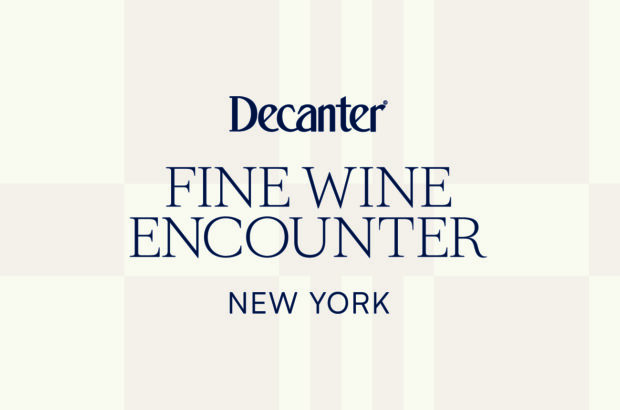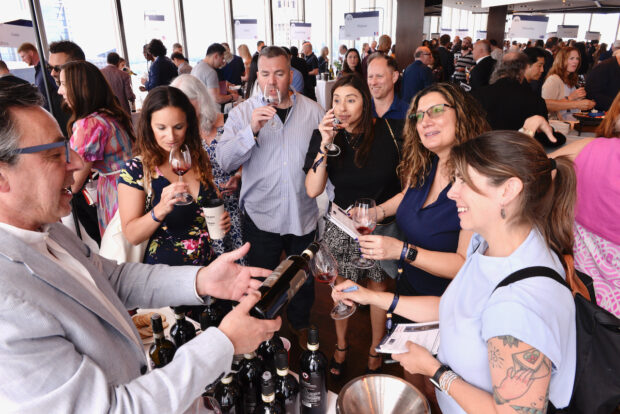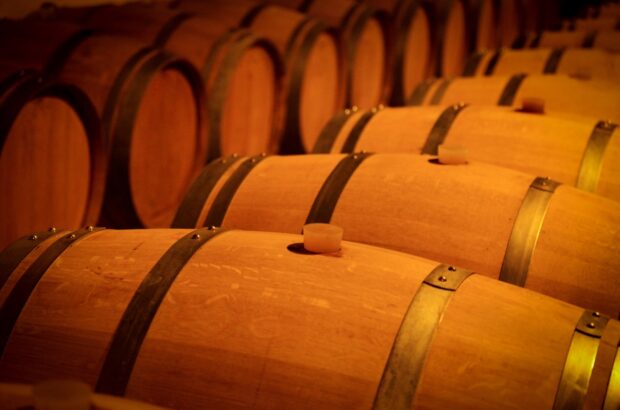Château Lafite-Rothschild 1870
1870 was one of the greatest prephylloxera vintages and, if cellared in perfect conditions – unvarying temperature, slight humidity – many wines were still drinking well even at a century old. Unquestionably, the most perfect I ever tasted was from a magnum of 1870 Lafite from Glamis Castle.
Glamis is the seat of the Earls of Strathmore and Kinghorne, but at the time of its discovery in 1970, the family had long lost interest in the contents of the old wine cellar, as they were considered ‘past their sale by date’. They were certainly not. Which is where I came in.
To cut a long story short, a director of the wine merchants, Cloags of Perth, following a routine visit, phoned to tell me he had discovered a wealth of great 19th-century wines, including 42 magnums of Château Lafite 1870, going on to say that ‘no one (at the Castle) is drinking wine and they might be persuaded to sell’. My reaction was immediate. I took the next train north, a sleeper, was met on arrival at Perth and driven straight to Glamis. It was an Aladdin’s Cave.
They were there in a row, identified by the original bin label, ‘Bin 16 / magnums of Lafitte (sic) / Coningham & Co’, the latter being the name of the merchant, also embossed on the capsule. Even more interesting, from the archives, Cellar Book 1885 to 1894: ’48 magnums of 1870 Lafite purchased and laid down in 1878′.
But why did 42 magnums remain? Clearly the 13th Earl of Strathmore was a connoisseur – but he didn’t like the wine. Possibly his heir didn’t either. It was what is known as ‘blackstrap’, bitterly tannic. And so it was left. What the Earl could not know was that this was a rare wine, like Château Latour 1928, which took 50 years to mature. But had it survived 100 years?
We packed the 42 magnums and 60 dozen of other old claret, but had to have written permission to take them. The trustee of the estate, not an easy gentleman (in my working clothes he couldn’t believe I was a director of Christie’s), at last gave his approval.
What had made our work easier was that, unusually, the cellar was at ground level, beneath the castle courtyard. We just backed the van in, loaded up and drove at high speed to Perth, then to Christie’s before our competitors heard about it.
I was responsible for the cataloguing and all went smoothly until it occurred to me, had the 13th Earl been right, and the 1870 Lafite was still undrinkable? No option; we had to open one. On 2 July 1971, Alan Taylor-Restell and I hosted a dinner at Christie’s to which we invited ‘noted palates’, including Harry Waugh and Hugh Johnson. I decanted the magnum. The level was high, the cork perfect. Deep in the decanter, it had more of a ruby sheen, quite indescribable; a flawless, indescribable bouquet that opened up in the glass; on the palate, sweet, wholesome, mouthfilling; a perfect balance of all the component parts yet still tannic – perfect with lamb. In short, at just over a century old, perfection. It had been risky, but other magnums tasted or heard about have also been flawless.
Château Palmer 1961
A wine that stands out. It would be unkind to describe this as a bit of a freak, though it has for some time been regarded as a super second. Like Mouton 1945, highly distinctive: a very sweet, remarkably concentrated nose and taste; at its peak, an almost Burgundian richness with mulberry-like fruit. A six-star wine. This was my last of over two dozen notes, tasted in May 2008, and still unmistakable.
Château Mouton-Rothschild 1945
It is not claret; it is almost not Bordeaux. It is ‘a Churchill of a wine’, immediately recognisable, complex, fascinating, unforgettable. Its appearance alone is so distinctive that I have several times recognised Mouton 1945 on colour alone. As for its bouquet, again unique. Described in my Vintage Wine book as ‘one of the most astonishing smells’ (perhaps I should have said scents) ever to emerge from grapes grown out-of-doors. The power and spiciness surges out of the glass like a sudden eruption of Mount Etna: (without the smell of sulphur or ashes) cinnamon, eucalyptus, ginger. Last tasted in November 2005 when I awarded it six stars out of five.
Decanter Premium: Jane Anson tastes Mouton Rothschild 1945
Château Haut-Brion 1945
Not an easy year, châteaux having to cope with a growing season of severe frosts in May, when the vines were literally ‘nipped in the bud’, then a summer of drought and excessive heat. The net result was a small crop of super-ripe wines. I regard Haut-Brion ’45 as probably its best-ever. Quite a few notes. In 1959: its earthy richness; 1971: at its peak. Its colour a warm ruby, with rich mahogany rim; wonderful bouquet, fragrant, ‘vanilla chocolate’ (did I mean ‘white’?), tobacco, honeycomb, touch of liquorice; on the palate a silky texture, crisp fruit yet luscious, perfect weight and balance. Last tasted June 1990: six stars. After all, it is the only (red) Graves rated 1er cru classé.
Château d’Yquem 1921
I have tasted almost 130 vintages of Yquem, from 1784 through the 19th and, of course, the last century. To choose which vintage of Yquem I consider the most outstanding has been difficult. It had to be the 1921, the legendary ‘star’ of the greatest Sauternes vintage of the 20th century. 1921 was a tremendously hot summer. Grapes were harvested with unusually high sugar content which, after fermentation, resulted in a monumental wine.
Of my 30 notes, not all are five star, some showing the wine’s age, but at its best, an amber gold colour, bouquet honeyed, peachy, ‘barley sugar’ (boiled and spun sugar) yet fragrant; very sweet, rich, powerful, even assertive, great length and intensity, supported by life-preserving acidity. One of life’s sublime experiences. Last tasted December 2000. Six stars, of course.
Château Cheval Blanc 1947
Another very great wine of the post-war period, and in my opinion ranked with Mouton ’45 as one of the greatest wines of the 20th century -certainly the greatest St-Emilion.
An increasingly hot summer led up to harvesting in almost tropical conditions, which caused winemaking problems. As a vintage, generally speaking, 1947 produced wines of exceptional quality, the danger being high volatile acidity. That such quality is possible in these conditions is demonstrated also by the outstanding, hot, 1921 vintage, which (as well as being a top Sauternes vintage) I could also have claimed as one of the peaks of claret.
I have tasted the 1947 Cheval Blanc over two dozen times. At its best, deep, incredibly rich, with ‘mammoth concentration’. At its zenith in the 1980s, variable – very variable – some almost Port-like. Bottle variation, yes, but some I have had my suspicions about.
Over the years, notably at Edmund Penning-Rowsell’s first growth tastings of each at 12 years of age, I had always ranked Cheval Blanc my favourite ’47. (Others, such as Latour, even Margaux, can still be tough at this age.) Summing up: the ’47 Cheval Blanc lives up to and even beyond its status. Last tasted in magnum May 1993. Six stars.
Château Climens 1971
The white Bordeaux chapter in Vintage Wine is of course dominated by Sauternes, for two reasons. Dry whites tend to be drunk young, whereas the sweet wines of major vintages, although they can be drunk young, benefit from bottle age, and they can have an extraordinary lifespan. Because I had so many notes on Yquem vintages, spanning more than two centuries, Château Climens – the top Barsac estate – was, by comparison, sparsely represented.
So, in 1971, in the middle of what was destined to be an outstanding vintage, Bérénice Lurton generously prepared a tasting of 30 vintages from 1964 to the vintage in barrel, 1970. Bérénice started tasting at one end, I at the other before we compared notes. Fast forward to 2001. Tasting at exactly 30 years of age, Climens 1971, as predicted, turned out to be one of the greats, the result of a perfect growing season and the pourriture noble, which gives these sweet wines an extra dimension. Its colour now a rich gold with green rim, plus orange and lime highlights; from first pour an almost too rich ‘buttery’ bouquet, soft caramel, honey. Very sweet of course, but not unctuous, good body yet not a heavy weight; glorious flavour, length and depth. A rare six stars.
Château Kirwan 1865
This might not be the greatest, but it was the most unexpected find.
From my first season at Christie’s, we held an average of 40 wine auctions a year, including two ‘Finest and Rarest’, each of which featured wines from ancient, ‘pristine’ (never moved) cellars.
In 1970 there were two remarkable sales from the cellars of the Meyrick family. The first, in June, from Hinton Admiral in Hampshire. Following its success, Sir George Meyrick remembered he had some ‘old sherry’ in the cellar at Bodorgan, the family ‘seat’ in Anglesey.
Daphne and I, who had packed up the first cellar in the spring of 1970, drove north and found, by remarkable coincidence, that old friends had built a holiday home on land adjoining Bodorgan House. It was August. We stayed with them and, on the Sunday, hopped over a wall to discover a brickvaulted cellar full of wine, not the least being nine dozen of Lafite 1865 and nine dozen of the 1875.
We took stock prior to packing. When we were about to finish, I noticed a small wire bin near the door with just over a dozen bottles unlabelled and with plain capsules. I didn’t think they would be worth packing and sending to London.
I rarely pull the cork of a bottle in a client’s cellar, but this time, out of curiosity, I did. To my surprise I found the cork branded ‘Château Kirwan 1865’. Upstairs I found a glass. It was delicious, faultless. I took bottle and glass upstairs to make a note of the wine, and to find Sir George who was in the kitchen. Telling him about the wine, I poured another glass for him for his lunch and hopped back over the wall with the taste. It accompanied the rest of the cellar, some 60 dozen in all, to London where, in October, the 1865 Kirwan sold for as high a price as the same vintage of Lafite.
All were bought on my recommendation by an old friend of mine, a great connoisseur. Last tasted March 2001. At best six stars.
Postscript: The following year I received a letter from M Schÿler of Shröder & Schÿler, Bordeaux négociants, the owners of Château Kirwan. In it -his very words – ‘Michael, I hear that Christie’s had sold a very old vintage of Kirwan. By now, the buyer must be tired of drinking such a tired old wine and we are prepared to pay ‘£1 a bottle for the remainder’. It can be imagined my joyous reply.
Château Laville Haut-Brion 1971
As an experiment, Henri Woltner, one of the brothers who by 1971 had transformed the quality of La Mission Haut-Brion and Laville Haut-Brion, left bunches on the vine for longer than usual, indeed as long as possible. As a result, the must had a very high sugar content, converting into 13% alcohol. First tasted in 1978 when the wine had a startlingly brilliant amber colour, a bouquet more like a Barsac, and a full rich honeyed ripeness giving the wine a touch of sweetness on the palate, with superb length and aftertaste. Last tasted in June 1990 and verging on six stars.
Château Margaux 1961
Under the Ginestet family ownership a plethora of great wines were made. Post-war: 1945: magnificent; 1953: a rich charmer, the loveliest of all. 1961: I tasted first in 1964 and predicted 20 years of development. In fact, a further 20 years later, at a cellar lunch at the château, I noted its ‘hallmark’, an exquisite bouquet; on the palate, sweet, brambly, with a sort of a singed fragrance. Last tasted in June 1970; hopeless really to describe its unique enchantment. Maturing of course, but if well-cellared, perfection. At least five stars.







